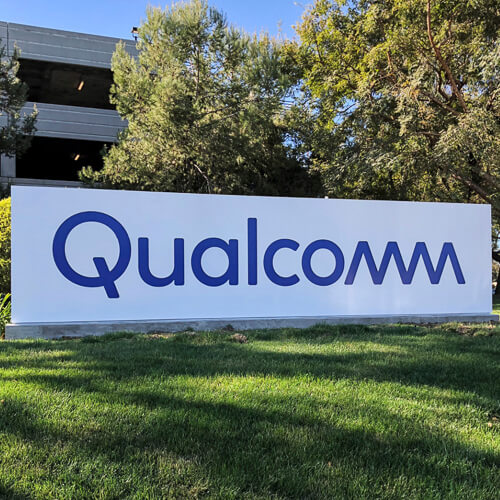
Qualcomm got into the spirit of things as Mobile World Congress (MWC) returned to Barcelona with a flurry of new releases on products and more.
The wireless technology specialist also took the opportunity to boast about the growing momentum behind the use of millimeter wave (mmWave) spectrum for 5G, building on its existing efforts to drive 5G mmWave development and commercialization.
According to Qualcomm, some 43 operators and equipment manufacturers have now committed to collaborating with it on deploying 5G in mmWave spectrum, which refers to frequencies above 24GHz that can complement 5G network rollouts in sub-6GHz bands (such as the pioneer 700MHz and 3.6GHz bands).
Figure 1:  Come together: Qualcomm is working with 43 operators to deploy 5G in the mmWave spectrum.
Come together: Qualcomm is working with 43 operators to deploy 5G in the mmWave spectrum.
(Source: Qualcomm)
The cohort includes familiar vendor names such as Ericsson, Nokia, Samsung and ZTE, although Huawei was not mentioned here. Operators include Airtel, AT&T, China Unicom, Deutsche Telekom, Elisa, Fastweb, KDDI, NBN, NTT DoCoMo, Optus, Orange, Rakuten Mobile, Singtel, SoftBank, Telia Finland, Telstra, TIM and Vodafone.
Qualcomm particularly noted the support in a growing number of regions including China, Europe, India, Japan, Korea, North America and South East Asia.
US in the vanguard
Ericsson and Qualcomm have already waxed lyrical about the benefits of mmWave, highlighting its ability to support extreme capacity, ultra-high throughput and ultra-low latency.
At a regional level, the US has spearheaded the allocation of 5G mmWave and has already carried out auctions that fetched eye watering amounts for the spectrum.
AT&T is deploying mmWave 5G under the rather dubious name of AT&T 5G+. Jeff Howard, vice president of mobile device portfolio at AT&T, said the service "is available in parts of 38 cities and in more than 20 venues across the country. By the end of 2021, AT&T expects 5G+ will be available in parts of more than 40 cities and to more than 40 venues across the country." Verizon has also been focusing on its mmWave deployment. For T-Mobile USA, however, it's still all about the midband.
In an April blog, Neville Ray, the CTO of the self-styled Un-carrier, wrote that midband spectrum "is clearly the global sweet spot for 5G. It's going to be much easier to compare progress and benchmark success in this phase of 5G." The operator offers two flavors of 5G: speedy "Ultra Capacity" 5G that works on its midband 2.5GHz spectrum and covers more than 100 million people, and slower "Extended Range" 5G that works on its lowband 600MHz spectrum and covers almost 300 million people.
As eecently reported by Light Reading, neither AT&T nor Verizon offers midband 5G services yet, and their mmWave 5G services cover only around a million people apiece, according to some estimates.
mmWave down under
More recently, Australian operators paid A$647.6 million (US$501.2 million) for a total of 2.4GHz in mmWave frequencies.
Missing out on MWC? Catch up on the latest from Mobile World Congress 2021 in Barcelona on our dedicated content channel here on
Light Reading.
Telstra was the biggest buyer, spending A$276.6 million ($213.8 million) to acquire the maximum of 1000MHz, covering major cities and key regional areas.
Related posts:
— Anne Morris, contributing editor, special to Light Reading
Read more about:
EuropeAbout the Author(s)
You May Also Like












